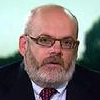Don’t expect any quick moves on interest rates from the U.S. central bank.
Minutes of the Fed’s May 1-ending interest-rate meeting revealed that the members of the Federal Open Market Committee seemed comfortable with their “patient” stance on interest rates, agreeing it could last for “some time.”
The FOMC held its target range for the federal-funds rate at 2.25% to 2.5%.
“Members observed that a patient approach to determining future adjustments to the target range for the federal-funds rate would likely remain appropriate for some time, especially in an environment of moderate economic growth and muted inflation pressures, even if global economic and financial conditions continued to improve,” the minutes said.
“No one is pushing for a near-term shift in policy, in either direction,” said Ian Shepherdson, chief economist at Pantheon Macroeconomics, in a note to clients.
In an interview after the minutes were released, Dallas Fed President Robert Kaplan said he was “agnostic” about whether the next interest rate move will be up or down.
Officials were split on the outlook for interest rates over the longer term.
A “few” officials said there might be a need for higher rates if the economy evolves as they think it will. But a “few” others thought higher productivity might mean there was more economic slack than the low unemployment rate might suggest.
“Several” others expressed worry about the risk of low inflation readings leading to lower expectations of future inflation, but these officials did not explicitly call for an interest-rate cut.
“Many” agreed with Fed Chairman Jerome Powell’s assessment that the recent low inflation readings were transitory.
Some officials said that the risks to growth seem to have receded since the beginning of the year, but “most” thought downside risks to the outlook remain. Only “some” thought that downside risks to inflation had increased.
In addition to interest-rate policy, there was a lengthy discussion, but no decisions, about what types of Treasurys the central bank should hold once its balance sheet stops shrinking. The main debate is whether the Fed should hold mainly short-term securities or a portfolio that reflects the outstanding issuance of such debt by the Treasury Department.
Officials said this discussion would be part of the continuing internal Fed review of its monetary policy strategy. Officials will gather in Chicago early next month to discuss whether a 2% annual inflation-rate target is the right approach to steer the economy. Any decision on changing the policy framework isn’t expected until early 2020.
The Dow Jones Industrial Average DJIA, -0.39% ended down by 100 points after the release of the minutes. The yield on the 10-year Treasury TMUBMUSD10Y, -0.18% fell four basis points to 2.395%.


